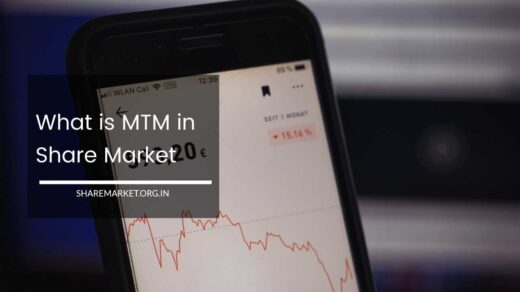IndusInd Bank Placed Under Short-Term ASM Stage 1 by NSE

IndusInd Bank
IndusInd Bank Placed Under Short-Term ASM Stage 1 by NSE: What It Means for Investors
Shares of IndusInd Bank have been placed under the Additional Surveillance Measure (ASM) Stage 1, as per a notice issued by the National Stock Exchange (NSE) on March 13.
This move signals a significant regulatory intervention due to unusual volatility in the stock’s price movements, which has raised concerns among market observers.
The ASM framework is designed by stock exchanges as a mechanism to ensure that trading activities remain transparent and free from manipulative practices, particularly when a stock shows signs of sudden and unexplained price fluctuations.
In this case, the decision to place IndusInd Bank under ASM Stage 1 underscores heightened scrutiny around the bank’s shares and signals to investors the importance of staying vigilant in these uncertain times.
What is the ASM Framework?
The Additional Surveillance Measure (ASM) is a risk management and monitoring framework introduced by Indian stock exchanges, including the NSE and Bombay Stock Exchange (BSE).
The purpose of ASM is to mitigate risks that arise from unusual market behavior, especially when a stock shows signs of extreme volatility or price manipulation.
The system has several stages, with Stage 1 being the initial level of scrutiny. It serves as an early warning system for potential issues that could affect the stock’s price stability and market integrity.
When a stock is placed under ASM, the exchange takes extra measures to monitor the stock’s trading activity.
In Stage 1, the most notable impact is the imposition of a 100% margin requirement for investors who wish to trade the stock.
This means that traders will have to deposit the full value of their intended trades upfront, rather than using leverage.
The intent behind this requirement is to discourage speculative and volatile trading while ensuring that investors have sufficient skin in the game to manage potential risks.
Furthermore, stocks placed under the ASM Stage 1 are monitored more closely, with the exchange scrutinizing trade patterns, price movements, and volume to identify any irregularities.
This increased oversight helps to detect any unusual activity or manipulation, offering protection to investors who may otherwise be exposed to heightened risk during periods of market instability.
Why Was IndusInd Bank’s Stock Placed Under ASM?
IndusInd Bank’s stock was placed under ASM Stage 1 following a sharp decline in its share price, making it one of the biggest losers on the Nifty index this week.
The bank’s shares fell by more than 30% in a short span of time, raising red flags for the NSE. The sudden price drop triggered a wave of concern among investors and market analysts, who speculated on the causes behind this sharp decline.
The reason for the significant drop in IndusInd Bank’s shares is not entirely clear, but a variety of factors may have contributed to the situation.
It is not uncommon for stocks in the banking sector, especially those of mid-sized banks, to experience volatility due to changes in macroeconomic conditions, investor sentiment, or internal financial performance.
However, when a stock moves too rapidly in either direction—especially in a short period—it can indicate market manipulation, market overreaction, or systemic issues within the company that require further examination.
The placement of IndusInd Bank under ASM Stage 1 suggests that the exchange is taking the necessary precautions to ensure that this sudden price movement is not the result of manipulative trading practices or unjustified speculation.
While the specific cause of the drop in share price is still under investigation, the increased scrutiny through ASM Stage 1 helps ensure that all market participants are operating on a level playing field.
Impact of ASM on IndusInd Bank’s Stock and Investors
For investors holding shares of IndusInd Bank or those considering trading the stock, the move to place it under ASM Stage 1 has several important implications.
The most immediate consequence of this action is the requirement for traders to meet a 100% margin requirement when buying or selling the stock.
This means that investors will need to provide the full value of the trade upfront, which can significantly increase the cost of trading and reduce the availability of leverage.
The higher margin requirement serves as a deterrent for speculative trading, which can help to prevent excessive price fluctuations caused by short-term traders.
While this is a protective measure for the broader market, it can also be a hurdle for individual investors who rely on margin trading to increase their exposure to stocks.
For those looking to trade IndusInd Bank shares, this could result in higher capital requirements and a more cautious approach to investment.
Additionally, placing the stock under ASM Stage 1 means that IndusInd Bank’s shares will be under closer surveillance by the exchange.
Any unusual price movements or trading volumes will likely be scrutinized more closely, with the aim of protecting investors from potential manipulation or erratic market behavior.
While this enhanced oversight can offer some peace of mind to investors, it may also introduce uncertainty as market participants react to the heightened scrutiny.
Why Do Stock Exchanges Implement ASM?
The ASM framework is an important tool for stock exchanges to maintain a fair and transparent market environment.
It allows exchanges to respond swiftly to unexpected or abnormal market behavior and helps ensure that investors are not exposed to undue risk.
The framework is designed to identify potential threats to market stability, such as price manipulation, insider trading, or other forms of market abuse.
The imposition of ASM is often seen as a precautionary measure that allows exchanges to investigate a stock’s behavior before taking more severe action.
By monitoring stocks under ASM, exchanges can collect data, track trading patterns, and identify any issues that may require further investigation.
In cases where suspicious activity is detected, more stringent measures may be taken, including placing the stock under more intensive surveillance, suspending trading, or even delisting the stock from the exchange.
In the case of IndusInd Bank, the decision to place the stock under ASM Stage 1 reflects the exchange’s commitment to protecting investor interests and ensuring the integrity of the market.
With the bank’s stock showing significant volatility, it is essential for the exchange to take action to safeguard investors and prevent any potential market manipulation.
Final Remarks: What Should Investors Do?
The decision to place IndusInd Bank under ASM Stage 1 highlights the importance of maintaining vigilance in the stock market, especially when unusual price movements or volatility are observed.
For investors holding shares of IndusInd Bank, it is crucial to understand the implications of the ASM framework and consider the potential risks associated with trading in a stock under heightened scrutiny.
Investors should be prepared for increased margin requirements and potential fluctuations in the stock’s price as the exchange continues to monitor its trading activity.
While the ASM framework is designed to protect market integrity, it may also introduce short-term uncertainty, which could affect investment strategies.
As always, investors should conduct thorough research, consult with financial advisors, and stay updated on market conditions before making any investment decisions.
The current situation with IndusInd Bank serves as a reminder of the importance of understanding the regulatory mechanisms that govern the stock market and the role they play in protecting investor interests.

















